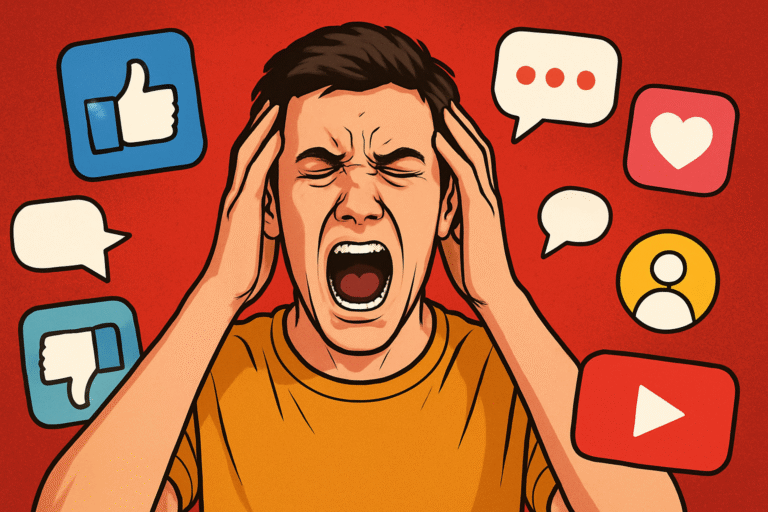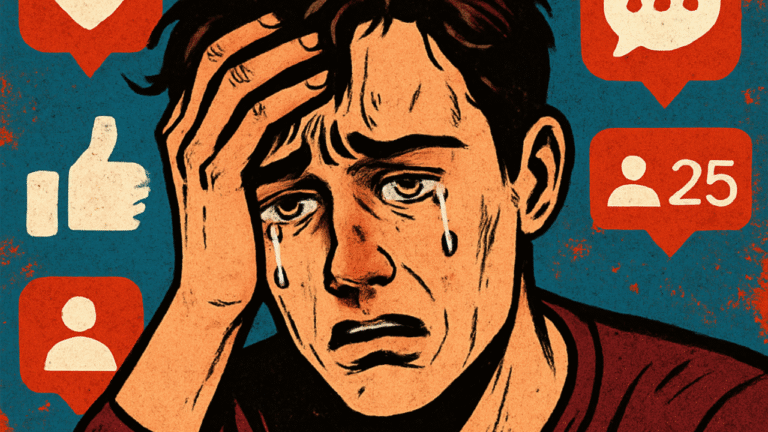Introduction
In the fast-paced world of entrepreneurship, where every decision can make or break a business, understanding the true value of a customer is paramount. Many business owners focus on immediate sales, quick wins, and short-term growth. While these are essential, they can sometimes overshadow a metric that holds the key to long-term success: Customer Lifetime Value (CLV).
CLV is not just another number on a spreadsheet; it’s a strategic compass guiding businesses toward sustainable growth, profitability, and customer loyalty. In this blog post, we’ll dive deep into why entrepreneurs should prioritize CLV, how it can transform your business, and practical steps to leverage it for maximum impact.
What is Customer Lifetime Value (CLV)?
Understanding the Basics
Customer Lifetime Value (CLV) is a metric that estimates the total revenue a business can expect from a single customer over the course of their entire relationship. It’s a forward-looking measure that helps entrepreneurs understand not just how much a customer is worth today, but how much they will be worth in the future.
CLV takes into account factors like the average purchase value, the frequency of purchases, and the duration of the customer relationship. By combining these elements, CLV provides a comprehensive view of a customer’s value to the business over time.
Why CLV Matters More Than You Think
Focusing on CLV allows entrepreneurs to see beyond immediate sales and understand the long-term profitability of their customer base. This shift in perspective can lead to smarter decisions in marketing, sales, product development, and customer service. Instead of chasing quick, one-time sales, businesses can cultivate loyal customers who repeatedly engage with their brand, driving sustained growth and profitability.
The Financial Impact of CLV
How CLV Drives Revenue Growth
At its core, CLV is about maximizing revenue from existing customers. By understanding how much a customer is likely to spend over their lifetime, businesses can make informed decisions about how much to invest in customer acquisition and retention.
For example, if you know that a customer’s CLV is $1,000, you might be willing to spend $200 on marketing to acquire them. This understanding helps align marketing spend with the long-term revenue potential of each customer, ensuring that every dollar spent contributes to overall profitability.
CLV and Customer Acquisition Cost (CAC)
One of the most critical ratios for any business is the relationship between CLV and Customer Acquisition Cost (CAC). CAC is the cost associated with acquiring a new customer, including marketing and sales expenses. A healthy business typically aims for a CLV that is three to five times higher than its CAC. This ratio ensures that the revenue generated from customers far outweighs the cost of acquiring them, leading to profitable growth.
Understanding this ratio allows entrepreneurs to fine-tune their marketing strategies. If your CLV-to-CAC ratio is too low, it may indicate that your customer acquisition costs are too high or that your customers are not staying long enough to justify the investment. On the other hand, a high ratio might suggest that you have room to invest more in customer acquisition to fuel growth.
The Strategic Benefits of CLV
CLV as a Tool for Strategic Planning
CLV is more than just a financial metric; it’s a strategic tool that can guide business decisions across the board. By focusing on CLV, entrepreneurs can shift their mindset from short-term gains to long-term success. This shift can inform everything from marketing strategies to product development and customer service.
For instance, if your CLV analysis shows that certain customer segments have a higher lifetime value, you can tailor your marketing efforts to attract more customers from those segments. Similarly, understanding the factors that drive CLV can help you develop products and services that enhance customer satisfaction and loyalty.
Enhancing Customer Retention with CLV
Retention is a key driver of CLV. The longer a customer stays with your business, the higher their lifetime value. Therefore, businesses that focus on retaining customers can significantly increase their CLV.
Customer retention strategies often include loyalty programs, personalized marketing, exceptional customer service, and regular engagement through content and communication. By investing in these areas, businesses can build stronger relationships with their customers, encouraging repeat purchases and long-term loyalty.
Moreover, retaining customers is generally more cost-effective than acquiring new ones. While it’s essential to bring in new customers, focusing on retention can provide a more stable and predictable revenue stream, especially during challenging economic times.
Using CLV to Drive Product and Service Innovation
CLV can also be a valuable tool for guiding product and service development. By analyzing the behaviors and preferences of high-CLV customers, businesses can identify opportunities to create new offerings that meet their needs more effectively.
For example, if you notice that customers with the highest CLV are consistently purchasing a particular product or service, you might consider expanding that line or offering complementary products. Similarly, if you identify pain points that cause customers to churn, you can develop solutions to address those issues, enhancing customer satisfaction and loyalty.
Innovation driven by CLV insights is more likely to resonate with your most valuable customers, leading to increased revenue and stronger customer relationships.
Practical Steps to Calculate and Improve CLV
How to Calculate CLV
Calculating CLV involves three key components:
- Average Purchase Value: The average amount a customer spends in a single transaction.
- Average Purchase Frequency: The number of times a customer makes a purchase over a specific period (e.g., monthly or annually).
- Customer Lifespan: The average length of time a customer continues to purchase from your business.
The basic CLV formula is:CLV=Average Purchase Value×Average Purchase Frequency×Customer Lifespan\text{CLV} = \text{Average Purchase Value} \times \text{Average Purchase Frequency} \times \text{Customer Lifespan}CLV=Average Purchase Value×Average Purchase Frequency×Customer Lifespan
For example, if your average purchase value is $50, your customers purchase five times a year, and the average customer lifespan is three years, your CLV would be:CLV=50×5×3=$750\text{CLV} = 50 \times 5 \times 3 = \$750CLV=50×5×3=$750
This calculation provides a straightforward estimate of how much each customer is worth to your business over their lifetime.
Steps to Improve CLV
Once you have calculated your CLV, the next step is to implement strategies to improve it. Here are some practical steps:
1. Enhance Customer Experience
A positive customer experience is crucial for increasing CLV. Focus on delivering exceptional service, addressing customer needs promptly, and ensuring that every interaction with your brand is smooth and enjoyable. Happy customers are more likely to return, purchase more, and recommend your business to others.
2. Implement Loyalty Programs
Loyalty programs are a powerful tool for boosting CLV. By rewarding repeat customers with discounts, special offers, or exclusive access, you can encourage them to continue doing business with you. These programs also create a sense of belonging and appreciation, which can strengthen customer loyalty.
3. Increase Average Purchase Value
One way to increase CLV is by encouraging customers to spend more during each transaction. You can achieve this through upselling (offering a more expensive version of a product) or cross-selling (suggesting complementary products). For example, if a customer is buying a laptop, you might offer them an extended warranty or accessories that enhance their purchase.
4. Foster Customer Engagement
Regularly engaging with your customers can keep your brand top of mind and encourage repeat purchases. Use email marketing, social media, and content marketing to maintain a connection with your customers, offering them valuable information, promotions, and updates. Personalized communication can make customers feel valued and more likely to stay loyal.
5. Reduce Customer Churn
Churn, or the rate at which customers stop doing business with you, is a major factor that can negatively impact CLV. To reduce churn, identify the reasons why customers leave and address them proactively. This might involve improving product quality, offering better support, or making it easier for customers to use your products or services.
6. Segment Your Customers
Not all customers are created equal. By segmenting your customers based on their behavior, preferences, and CLV, you can tailor your marketing efforts to different groups more effectively. For example, you might offer special promotions to high-CLV customers or provide additional support to those who are at risk of churning.
The Role of CLV in Scaling Your Business
CLV and Business Growth
As your business grows, understanding and optimizing CLV becomes increasingly important. High CLV can fuel your growth by providing a steady stream of revenue from loyal customers, reducing the need for constant new customer acquisition.
Focusing on CLV also allows you to scale more efficiently. By maximizing the value of each customer, you can achieve higher revenue without significantly increasing your costs. This efficiency is crucial for maintaining profitability as your business expands.
CLV and Investor Appeal
For entrepreneurs seeking investment, CLV is a key metric that investors look at when evaluating a business. A high CLV indicates that your business has a strong customer base, predictable revenue streams, and a solid foundation for growth. Investors are more likely to be attracted to businesses with a high CLV-to-CAC ratio, as it suggests that the business can generate returns efficiently.
Leveraging CLV for Competitive Advantage
In a competitive market, CLV can be a powerful differentiator. By focusing on building long-term relationships with your customers and maximizing their lifetime value, you can set your business apart from competitors who may be more focused on short-term gains.
A high CLV indicates that your customers are not only satisfied with your products or services but are also loyal and likely to stick around. This loyalty can give you a competitive edge, especially in industries where customer retention is challenging.
Conclusion
Customer Lifetime Value (CLV) is more than just a metric; it’s a strategic tool that can drive the long-term success of your business. By focusing on CLV, entrepreneurs can make smarter decisions about marketing, customer retention, product development, and overall business growth.
In a world where customer expectations are higher than ever, and competition is fierce, understanding and optimizing CLV can provide a significant advantage. It allows businesses to build deeper relationships with their customers, ensure sustainable growth, and ultimately, achieve greater profitability.
As an entrepreneur, it’s time to shift your focus from short-term wins to the long-term value of your customers. By obsessing over CLV, you’ll not only grow your business but also create lasting relationships that fuel your success for years to come.




